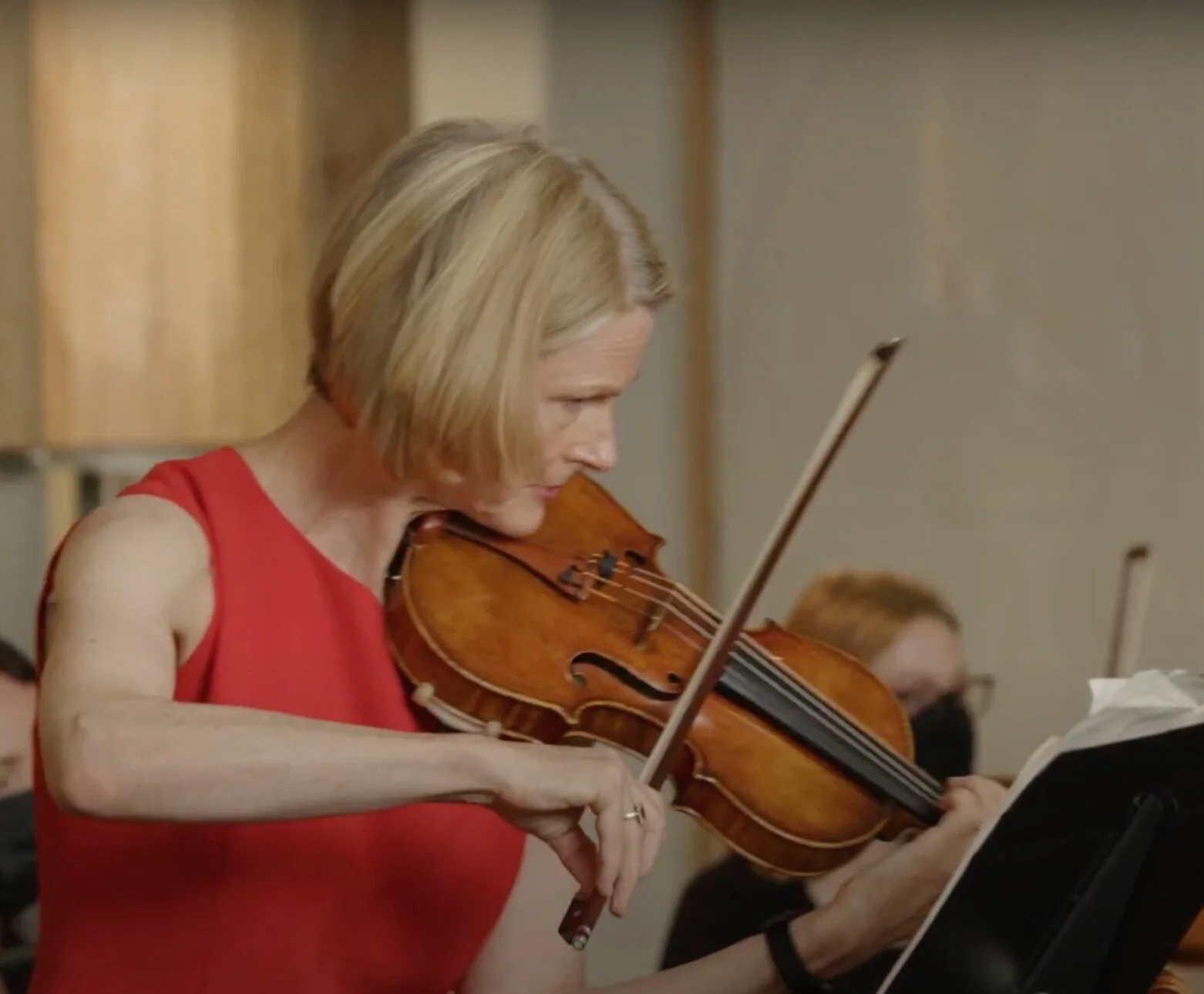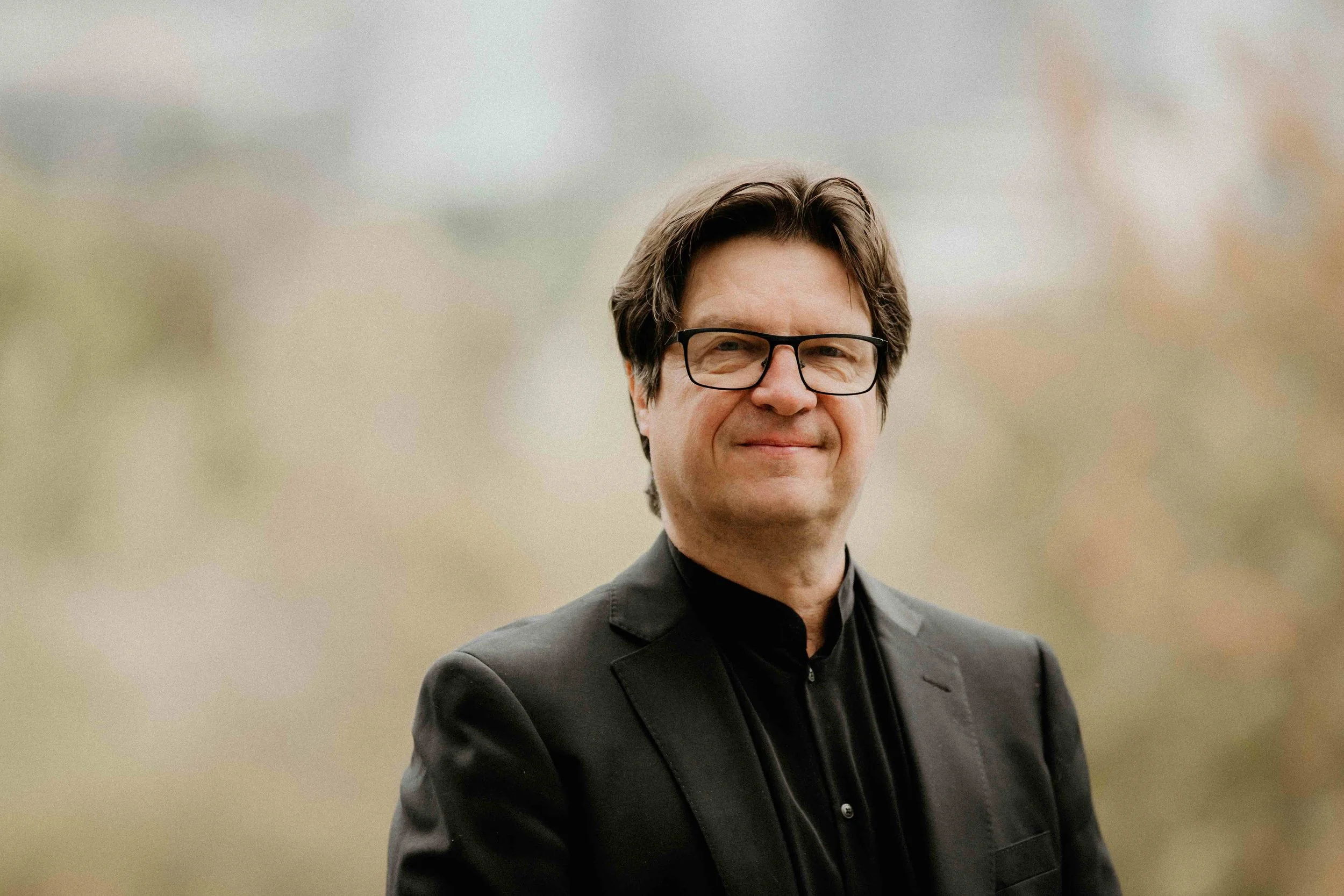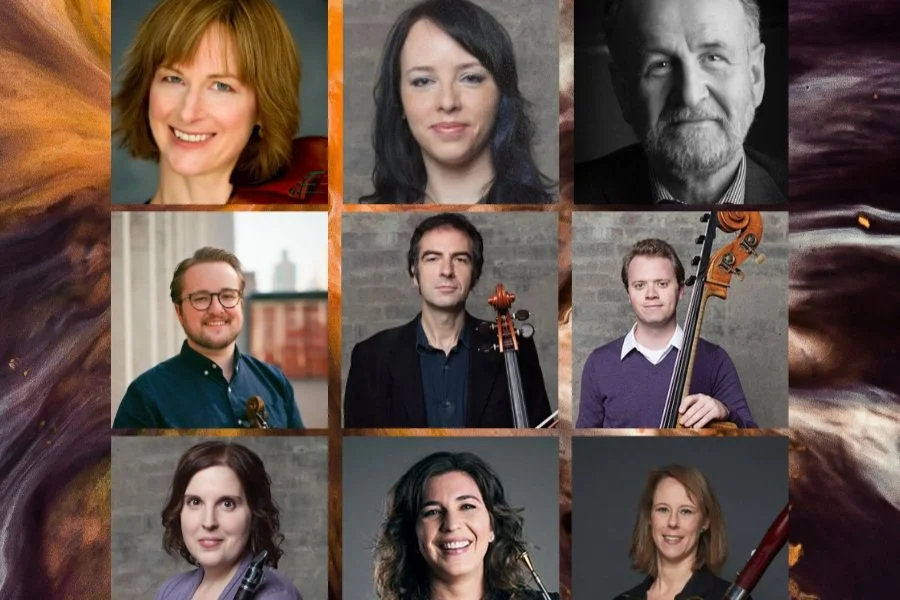Vetta Chamber Music's Seasons of the Sea interweaves Indigenous storytelling and strings
Years-long project with storyteller Rosemary Georgeson reaches new audiences in online video
A stiill from Seasons of the Sea.
Vetta Chamber Music is streaming Seasons of the Sea online to September 30, 2022.
WITH SEASONS OF THE SEA ready to stream starting October 16, Vetta Chamber Music has captured one of its most significant, years-long projects on video.
Featuring Indigenous storyteller Rosemary Georgeson, drummer Renae Morriseau, Joan Blackman on violin, and the Vetta Chamber Players interpreting music by Jeffrey Ryan, the film was shot in the Bill Reid Gallery of Northwest Coast Art early in the summer. The cross-cultural project has been performed around the city and province—but the video will now take its messages about living in harmony with the sea and the importance of protecting our natural world to an even wider audience.
“I want settler audiences throughout BC and Canada to experience this piece, and I hope there’s a little opening of hope that comes with it,” Blackman says. “Rosemary and I were thinking we’d like to take it into the schools, and that it deserves to be heard in as many places and in as many communities as possible.
“It's not so much about educating people as offering them a door in,” she adds.
Commissioned about five years ago to mark Vetta’s 30th anniversary, Seasons of the Sea interweaves Indigenous storytelling, strings, and profound ideas about this place and the forces that threaten our climate. Ryan wrote the score as a West Coast response to Antonio Vivaldi’s The Four Seasons. Georgeson’s words trace the 13-moon season of the Coast Salish peoples who have long used the tidal shifts, the life cycle of fish, and the changing ocean weather as their calendar.
“It feels more like a circle,” Blackman observes, comparing those seasons to Vivaldi’s structured Spring, Summer, Autumn, and Winter—in a piece that’s paired with Seasons of the Sea in this recorded performance.
Narrator Rosemary Georgeson in a still from Seasons of the Sea.
“Our seasons are organized around where we are and how we do things—our way of being is inside those seasons,” agrees Georgeson, a Sahtu Dene/Coast Salish artist who hails from a Galiano Island and a family of fishers, sharing a conference call with the violinist. “So that’s how our seasons move: in a circular motion—that's how our world is defined. As a fisherman growing up, I knew when Dad was going to be leaving by what the weather was doing. I’d know when he’d be back home because of what smell was in the air—if you could smell the fish out in the pass.”
The new video performance has several new elements, including a welcome and blessing from Indigenous elders, and the addition of young Indigenous violist Justin Almazan to the Vetta Chamber Players (Jennie Press and Ashley Plaut on violin, Zoltan Rozsnyai on cello, Dylan Palmer on bass, and Jane Hayes on harpsichord—Ryan’s sly nod to Vivaldi.) Another new component is live percussion by well-known Cree and Saulteaux artist and musician Renae Morriseau. Georgeson, a longtime friend and colleague of the M’Girl musician, says she loved watching solo violinist Blackman play off the traditional rhythms.
Violin soloist Joan Blackman in Seasons of the Sea.
“That felt like a total transformation of the piece—it took it to another level,” Georgeson says. “I think we’ve really learned a different way of listening.”
“In a way, our two cultures have learned to riff off of each other more and more with Seasons of the Sea—and luckily the piece is so flexible that we’re able to riff,” Blackman relates. “When we performed at the Heart of the City Festival one year, one of the elders said the way we were working together was a model for Reconciliation. We have this thing where, when we work together, it’s not measuring—we’re just listening together.”
That adds to the listening experience for the audience, too. Amid the swirling layers of Ryan’s written notes and Blackman and the players’ improvisations, you’ll hear the pitter-patter of rain on the sea, the slapping of fish against water, and even the singing of frogs. (Watch and hear the video trailer below for an idea of the surprising coastal soundscapes that come to life with mostly classical strings.) The sounds respond to and evoke the settings for the tales that Georgeson brings from her own family memories and from elders who have passed stories along to her.
“Joan makes the sun that sparkles on the water have a beautiful sound,” Georgeson adds.
And though the multifaceted concert warns of the responsibility we all have toward the planet, Blackman emphasizes, “The music is so beautiful that it brings hope.”
“That’s what we want in the end—that you feel like you're left with hope,” Georgeson echoes.
















